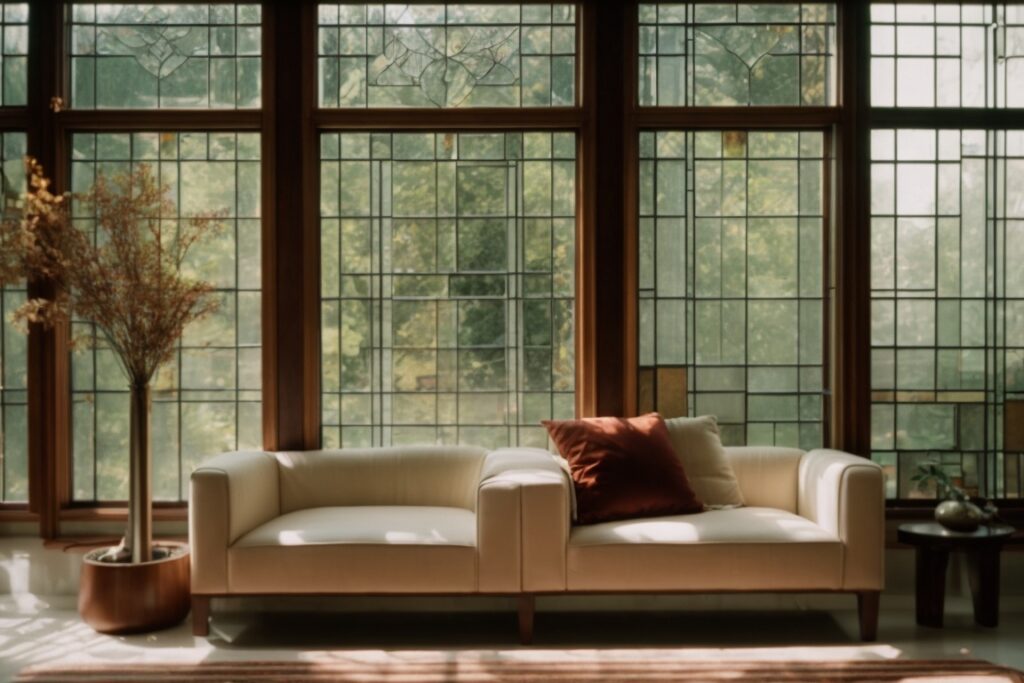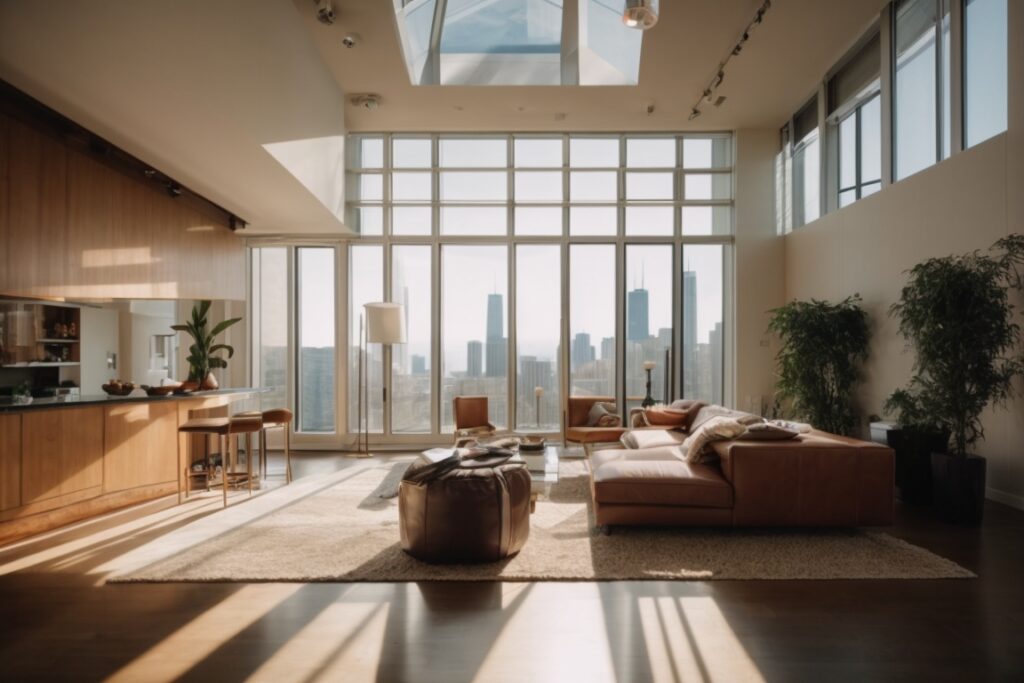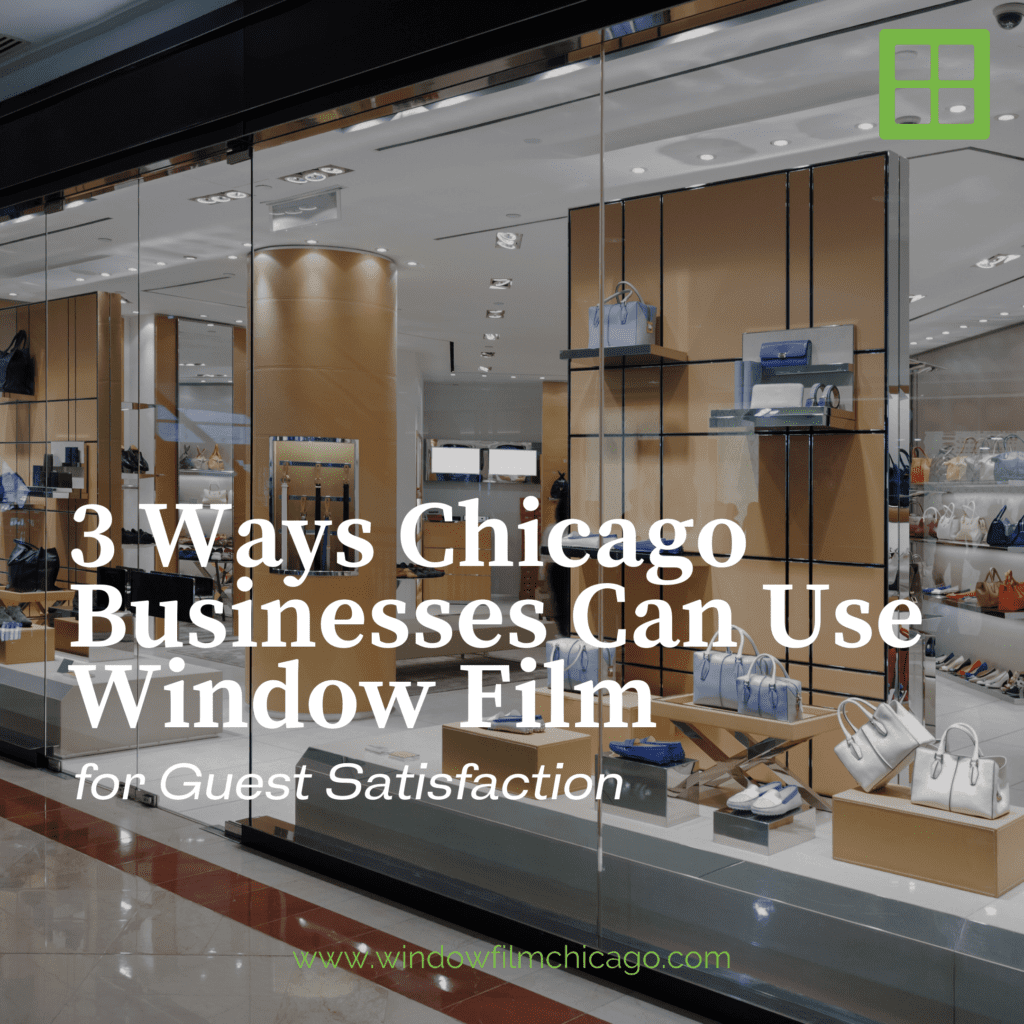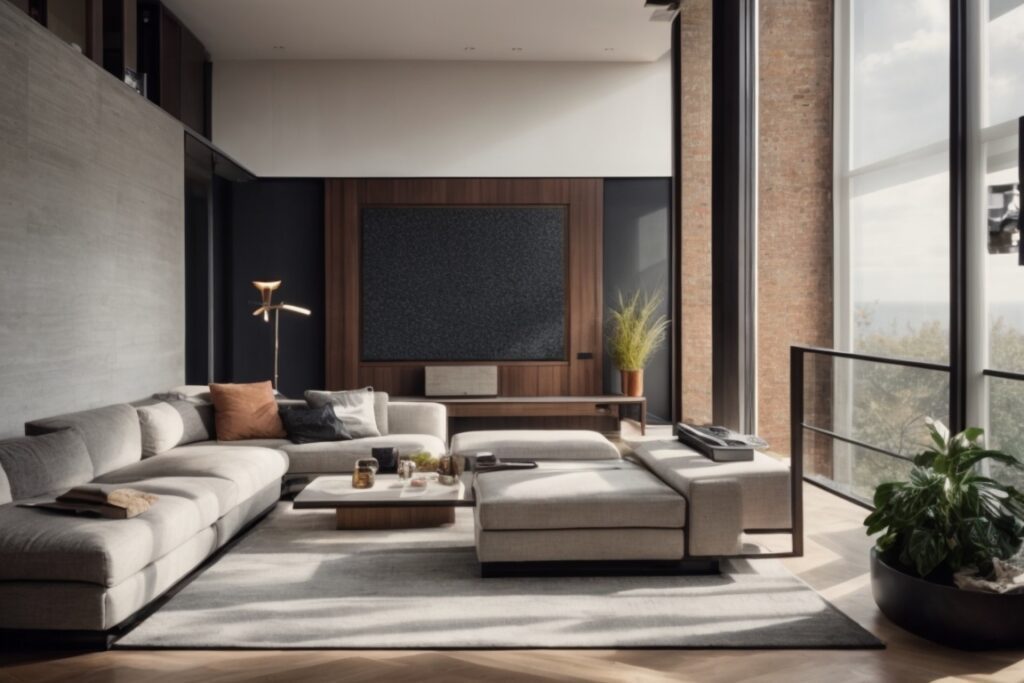
Achieving Chicago Freshness with the Fineness of Low-E Glass Film Installations
In the bustling urban environment of Chicago, residents face a unique set of challenges when it comes to maintaining comfortable and energy-efficient living spaces. Among the myriad solutions explored, the installation of low-e (low-emissivity) glass film has emerged as a sophisticated yet underrecognized answer to some of these problems. Despite its significant benefits, many in Chicago remain unaware of how low-e glass film can enhance the quality of their living experience while contributing to energy savings.
The struggle to maintain a pleasant indoor temperature throughout the changing seasons in Chicago is not just a matter of personal comfort; it’s also about ecological responsibility and economic savvy. Traditional windows often fall short in providing adequate insulation against the extreme cold of windy winters and the sweltering heat of summer. This can lead to an over-reliance on heating and cooling systems, which in turn contributes to increased energy consumption and higher utility bills. Low-e glass film represents a promising solution, designed to improve window insulation and reduce energy costs, but its adoption is slow due to a gap in public awareness.
As we delve deeper into discussions about sustainability and energy efficiency, the relevance of upgrading to low-e glass film in Chicago’s residential and commercial spaces cannot be overstated. It’s a topic ripe for further exploration, especially considering the potential environmental and financial benefits that could dramatically impact residents of Chicago. Raising awareness about the advantages of low-e glass film installations is essential for making our urban living spaces more comfortable, economically efficient, and environmentally friendly.
Understanding the Need for Low-E Glass Film in Chicago
In the bustling cityscape of Chicago, the architectural marvels and skyscrapers are a sight to behold. However, these glass-paneled buildings face a significant issue – the adverse effects of climate on indoor environments. The primary concern centers on the need for a solution that mitigates these effects while maintaining the aesthetic and structural integrity of the buildings. This is where the importance of low-e glass film installation comes into focus.
Low-E (low emissivity) glass films are designed to reflect heat when applied to window surfaces, helping maintain a balanced indoor temperature regardless of the seasonal extremes outside. The challenge at hand for many Chicago properties, both residential and commercial, is combating the diverse weather patterns—from sweltering summers to frigid winters—without escalating energy costs or sacrificing natural light. The absence of a solution like low-e glass film results in increased utility bills, discomfort for inhabitants, and potential harm to the interior furnishings from UV exposure.
Transforming Urban Natural Light in Chicago with Low-E Glass Film
Chicago’s urban landscape is undergoing a quiet revolution in energy efficiency and comfort, thanks to the adoption of Low-E glass film. Here are some startling facts: Nearly 40% of annual energy costs for the average Chicago home can be attributed to heating and cooling, with windows being a significant source of energy loss. Low-E glass film reduces this loss by up to 70%, making it an essential upgrade for energy-conscious homeowners. Additionally, in Chicago’s variable climate, UV exposure through windows not only fades interiors but also harms skin health over time. Low-E glass installations block over 99% of harmful UV rays, protecting both your home’s interior and your family’s health. The move towards Low-E glass in Chicago isn’t just about savings; it’s about enhancing the quality of urban living with smarter, healthier homes.
The Problem of Inefficient Window Solutions in Chicago
In a bustling urban environment like Chicago, homeowners and businesses face the crucial challenge of maintaining energy efficiency and comfort within their buildings. The problem arises from outdated or inefficient window solutions that fail to keep up with the city’s diverse weather conditions, spanning bitterly cold winters to scorching summer temperatures. Not only do these window solutions lead to significant energy loss, but they also contribute to higher utility bills and a decreased level of comfort for occupants.
Traditional glass windows without low-e (low emissivity) film are particularly problematic in Chicago. During winter, they allow too much heat to escape, forcing heating systems to work overtime and driving up energy costs. Conversely, in the hot summer months, these windows let in too much solar heat, making air conditioning units struggle to keep indoor temperatures comfortable. This inefficiency is not just a matter of discomfort but translates into tangible financial implications for property owners.
Moreover, the absence of low-e glass film exacerbates the problem by failing to filter out harmful UV rays, which can lead to the fading of furniture, carpets, and artwork. The cumulative effect of these issues presents a sizable problem for Chicago residents, compelling them to look for more efficient window solutions that can address these challenges head-on.
Thus, the inefficiency of traditional window solutions in Chicago is not merely an inconvenience; it represents a substantial economic and comfort-related problem for homeowners and businesses alike. Upgrading to Low-E glass film becomes an essential consideration for anyone looking to improve their property’s energy efficiency, reduce utility costs, and enhance indoor comfort year-round.
Understanding the Problem with Traditional Window Solutions in Chicago
In the bustling city of Chicago, the extreme weather fluctuations from sweltering summers to frigid winters pose a significant challenge to maintaining a comfortable home environment. Traditional window solutions fall short in providing year-round thermal comfort, leading to skyrocketing energy bills and discomfort during peak weather seasons. Many residents are unaware of how much energy is wasted due to the inefficiency of conventional glass in reflecting or retaining heat.
The problem exacerbates when considering the environmental impact of increased energy consumption and the personal discomfort of living in a space that’s too hot in summer and too cold in winter. The reliance on outdated window technology not only strains the wallet but also contributes to a larger ecological footprint. This highlights the critical need for an innovative solution that addresses the unique climatic challenges faced by Chicagoans, ensuring their homes remain an oasis of comfort regardless of the season.
Boosting Energy Efficiency in a Chicago Bungalow with Low-E Glass Film
In Chicago, the Johnson family was struggling with high energy bills during the city’s notorious winters and humid summers. Their century-old bungalow, while charming, was a nightmare to heat and cool efficiently. After researching various solutions, they decided to install low-e glass film on their existing windows. The results were immediate and impressive. Not only did their energy bills decrease by 20%, but the comfort of their home improved dramatically, proving that even in historic homes, modern technology like low-e glass film can provide significant energy efficiency and comfort improvements.
The Consequences of Ignoring Low-E Glass Film Installation in Chicago
Overlooking the importance of installing Low-E glass film in Chicago can lead to a range of negative consequences, affecting everything from comfort to energy costs in your home. The absence of this innovative film compromises the thermal efficiency of your property, especially during the harsh winter and humid summer months typical of the region.
Without Low-E glass film, Chicago homes are more susceptible to heat loss during winter and excessive heat gain in summer, forcing heating and cooling systems to work harder. This not only impacts your comfort level but significantly increases your energy bills. The excessive strain on HVAC systems may also lead to frequent repairs or premature replacement, further adding to your financial burden.
Moreover, ignoring the problem can accelerate the fading of interior fabrics, artwork, and furnishings due to increased UV exposure, ultimately affecting the aesthetic appeal and value of your home. In essence, the decision to skip the installation of Low-E glass film not only affects your immediate living environment and costs but could also have long-term repercussions on the overall value of your property in Chicago.
Economic Impacts of Not Installing Low-E Glass Film in Chicago
Overlooking the benefits of Low-E glass film in Chicago homes can significantly impact economic security for homeowners. In a city known for its varying weather conditions, energy costs can fluctuate drastically. Without Low-E glass film, windows allow for unnecessary heat loss during winter and excessive heat gain during summer, leading to increased reliance on heating and cooling systems. This reliance directly correlates to higher energy bills. Moreover, consistent overuse of these systems strains them, leading to potential repairs or replacements sooner than anticipated. Investing in Low-E glass film is not just a nod towards energy efficiency but a strategic move towards stabilizing and potentially reducing long-term household expenses.
Embrace the Benefits of Low-E Glass Film in Chicago Homes
In the unique urban landscape of Chicago, where the clash of seasons brings about distinct temperature variations, Low-E glass film installations stand out as a pivotal solution for enhancing the living environment. Focused on addressing the pressing issues of energy efficiency, comfort, and UV protection, Low-E glass film is positioned as an essential upgrade for any Chicago home.
Low-E glass film significantly improves the insulative properties of existing windows, leading the way to considerable energy savings. By reflecting interior temperatures back inside during winter and keeping the harsh summer heat at bay, it ensures that homes remain comfortable year-round without putting excessive stress on heating and cooling systems. Such efficiency not only reduces energy costs but also contributes to the environmental efforts of reducing carbon footprints—a critical concern for the conscientious Chicago resident.
Moreover, the protection against UV rays provided by Low-E glass films is indispensable for homeowners. It protects interior furnishings, artworks, and fabrics from fading, thus prolonging their life and maintaining the aesthetics of the home’s interior without compromising on natural light. This added layer of UV protection, combined with energy savings, positions Low-E glass film not just as a utility improvement but as an investment into the longevity and preservation of the home’s interior assets.
For Chicago residents facing the extremities of both sweltering summers and frigid winters, the adoption of Low-E glass film installations can be a proactive step towards not only elevating the comfort and efficiency of their living spaces but also enhancing the overall value of their homes. This positioning accentuates Low-E glass film as a smart, forward-thinking choice for those looking to meld preservation with innovation in the heart of Chicago.
Achieving Chicago Freshness with the Fineness of Low-E Glass Film Installations
Low-E glass film provides a cutting-edge solution for residents of Chicago seeking to enhance their home’s energy efficiency and comfort. This innovative product addresses the dual challenges of maintaining comfortable indoor temperatures and reducing utility costs, crucial in Chicago’s varied climate. Low-E, or low-emissivity, glass film works by reflecting infrared light, keeping spaces warmer in winter and cooler in summer without sacrificing natural light.
Additionally, this glass film helps protect against UV rays, which can fade furniture and flooring over time. Its application is straightforward, fitting seamlessly onto existing windows, making it an accessible update for any home. By optimizing thermal efficiency, low-E glass film significantly reduces the need for heating and cooling, leading to substantial savings on energy bills.
Moreover, its utility goes beyond just energy savings—enhancing comfort levels throughout the year by maintaining a more consistent indoor environment. For Chicagoans looking for an effective way to update their homes while tackling energy and comfort issues, low-E glass film installations offer a practical and stylish solution.
Benefits and Features: Low-E Glass Film in Chicago
Opting for low-e glass film in Chicago introduces a bevy of advantages, key among them enhanced energy efficiency. This innovative film reflects interior temperatures back inside, keeping homes warm during the chilly winters and cool in the sweltering summers. Consequently, it can significantly reduce energy costs. Moreover, it offers superior UV protection, shielding your furnishings from the sun’s damaging rays, thus prolonging their life. Its discreet application doesn’t alter the aesthetic appeal of your windows, ensuring your home remains stylish while functionally upgraded. In essence, low-e glass film stands as a cost-effective, energy saving, and protective solution for any Chicago residence.
Success Stories: Embracing Comfort in Chicago with Low-E Glass Film
Chicago’s architectural landscape has forever been transformed by the introduction of low-E glass film, bringing not just aesthetic value but unparalleled comfort and efficiency. A compelling testament to its impact comes from the Johnson family in the heart of the city. After dealing with the daunting challenge of maintaining indoor temperatures amidst Chicago’s unpredictable weather, they decided to invest in low-E glass film installations for their home. The change was instantaneous. They were amazed by not only the significant reduction in their energy bills but also the added comfort and protection against UV rays. The Johnsons remarked, “It’s like we’ve discovered a whole new way of living comfortably in our beloved Chicago home, year-round.
Another powerful endorsement comes from a local business owner, Ms. Thompson, who operates a bustling café. Facing west, her establishment was plagued by the harsh afternoon sun, making the dining experience less than ideal for her customers. After installing low-E glass film on her storefront windows, Ms. Thompson noticed an immediate difference. “It’s been transformative,” she shares. “Our customers can now enjoy their meals in comfort, and the glare that once deterred afternoon clientele is gone. It’s one of the best investments I’ve made for my café.” These stories underscore the profound effect low-E glass film installations have had on enhancing the living and working environments in Chicago, making them a go-to solution for battling the city’s extreme seasons.
Transforming Chicago Homes: A Low-E Glass Film Success Story
A family in Chicago, seeking to enhance their home’s energy efficiency and comfort, opted for low-e glass film installation. Despite the city’s unpredictable weather, they noticed immediate improvements in temperature control and a significant reduction in their energy bills. This real-life example highlights the effectiveness of low-e glass film in Chicago’s climate, not only for its energy-saving benefits but also for the added comfort it brings to homes. Ready to experience similar benefits? Contact us today to learn more about our low-e glass film solutions!







About The Author: Mike Kinsey
Mike Kinsey has more than a decade of experience installing window film in the Chicago area. His years of experience have allowed him to develop a deep familiarity with all of the different types and styles of window film on the market including the various security, privacy, decorative, and energy efficient options. Together, he and his team have completed hundreds of commercial and residential installs, totaling an accumulation of over 250,000 square feet. In addition to being an expert on top brands such as LLumar, C-Bond, HDClear, Solar Gard, Solyx, and Huper Optik, Mike is also certified by 3M, EnerLogic, and AIA for continuing education.
More posts by Mike Kinsey